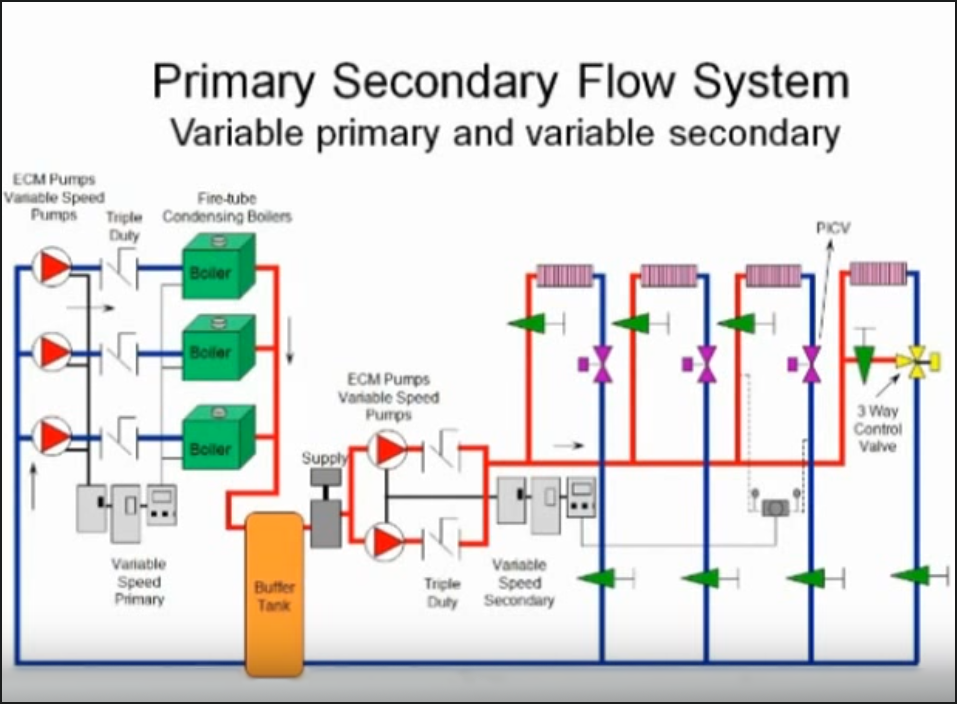Successful cooling tower operation and performance involves a delicate balance between (1) keeping the dissolved solids (such as calcium, magnesium, chloride, and silica) in the water from causing too much scale and/or corrosion and (2) conserving make-up water. It’s expensive, inefficient, and environmentally irresponsible to continuously dilute cooling tower water with an abundance of make-up water just to keep the ratio of minerals down. But how do you decide how much make-up water is needed to keep minerals within a tolerable range?
Read MoreCorrectly piping the suction and discharge of your cooling tower/condenser water pump is critical. Some fairly catastrophic events can occur if either is improperly installed. Here are some best practices for piping cooling tower/condenser water systems....
Read MoreWant to make sure the cooling towers in the systems you design operate as intended? If you are a design engineer, you are responsible for outlining the staging sequences of the cooling tower systems you design. This means putting together a list of the acceptable operational sequences, outlining what every piece of equipment will be doing at each and every stage.
Here's how you develop that list which the controls vendor will use to program the system...
Read MoreLarger facilities often have multiple cooling towers serving multiple chillers, enabling them to more closely match demand. Piping such systems can be a challenge, depending on the amount of flexibility desired. Here we describe the three most common approaches to piping multiple cooling towers and chillers.
Read MoreWe like to vary flow through our hydronic systems, don’t we? After all, less flow equals less pump energy. But when it comes to cooling tower performance and longevity, just be careful not to overflow or underflow the tower. Either scenario can lead to some pretty costly problems.
Read MoreJMP Equipment Company
Search
Series
Check Out Our Videos!
Get Updates from Us
Visit our Contact Page and let us know what information you'd like to receive.
Contact About Videos Sign Me Up
Powered by Squarespace


